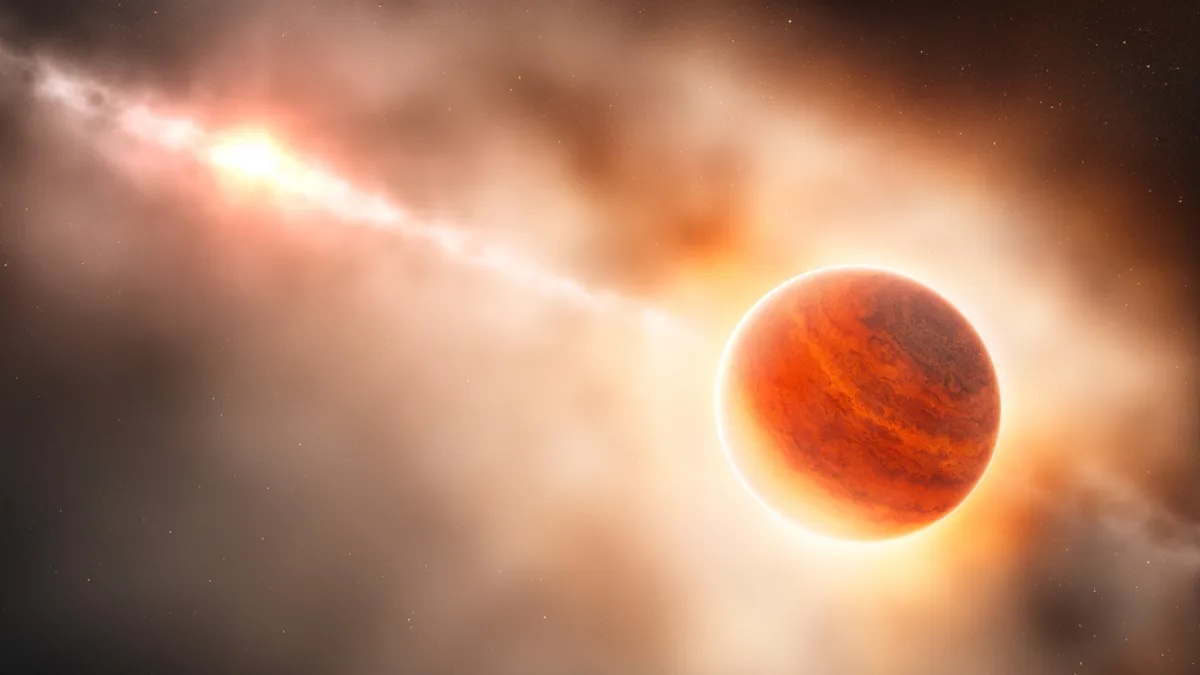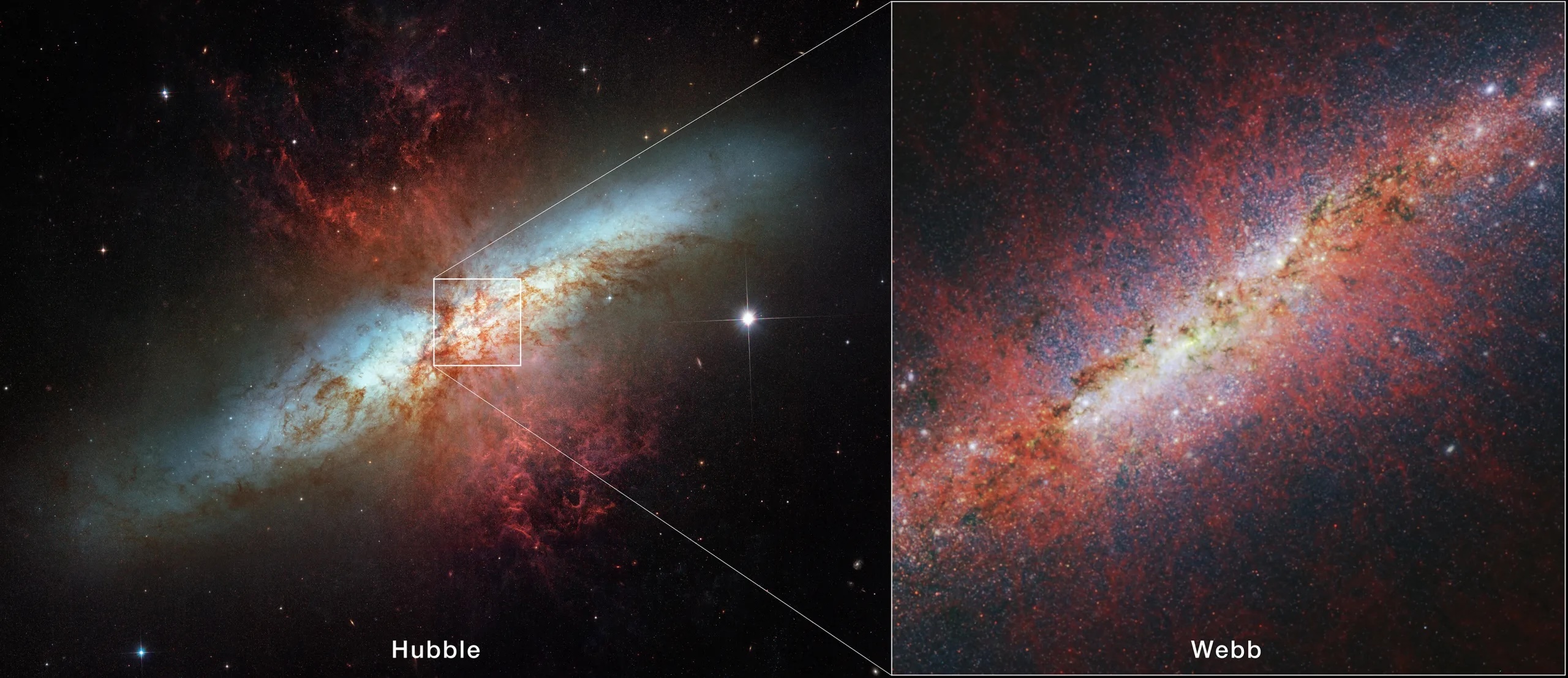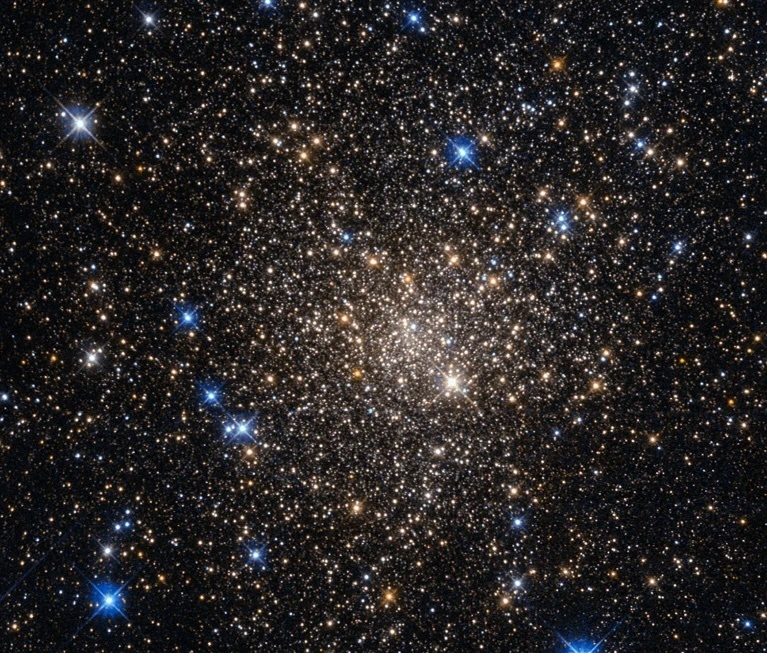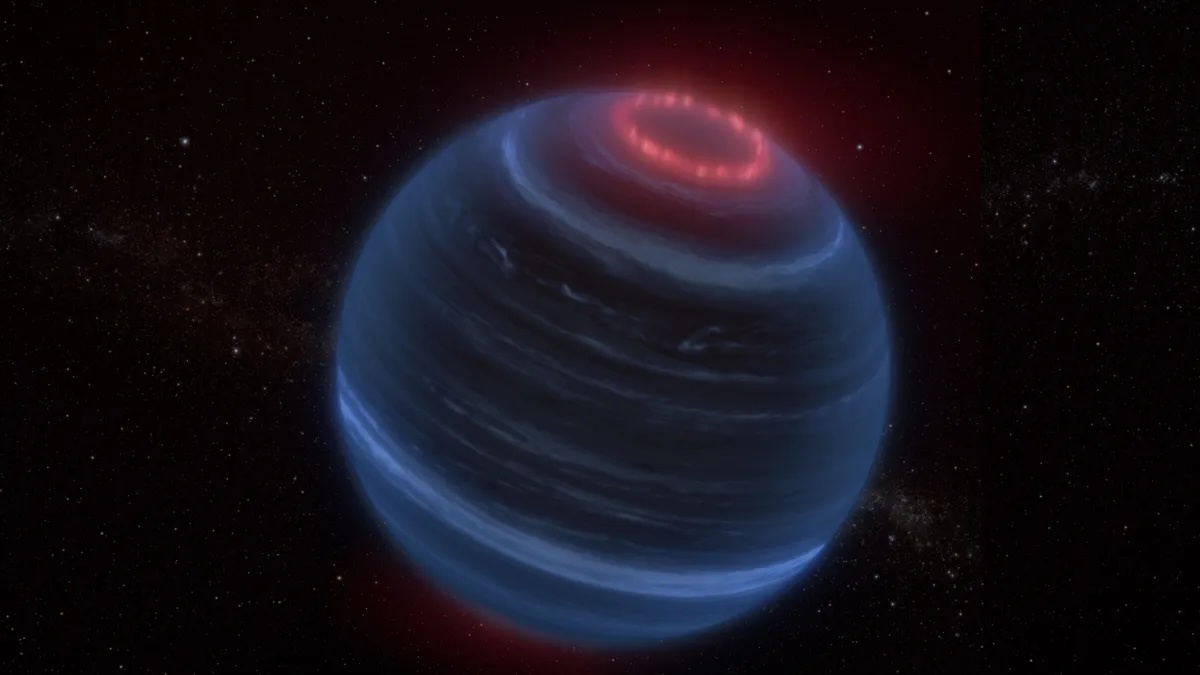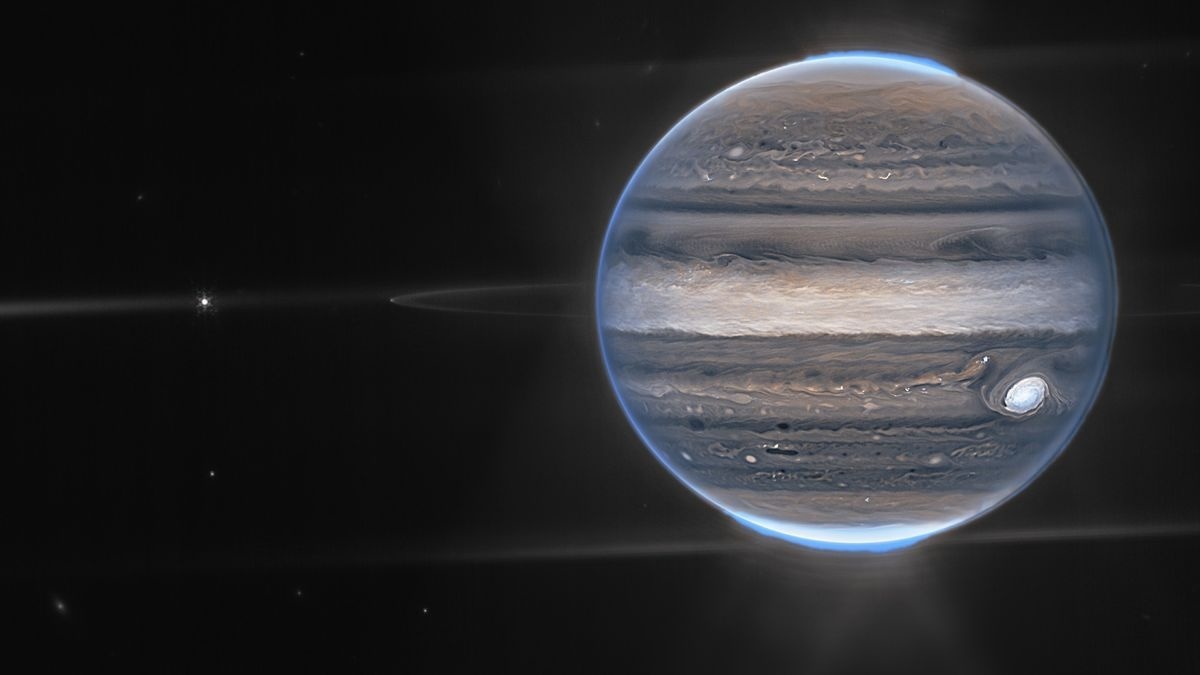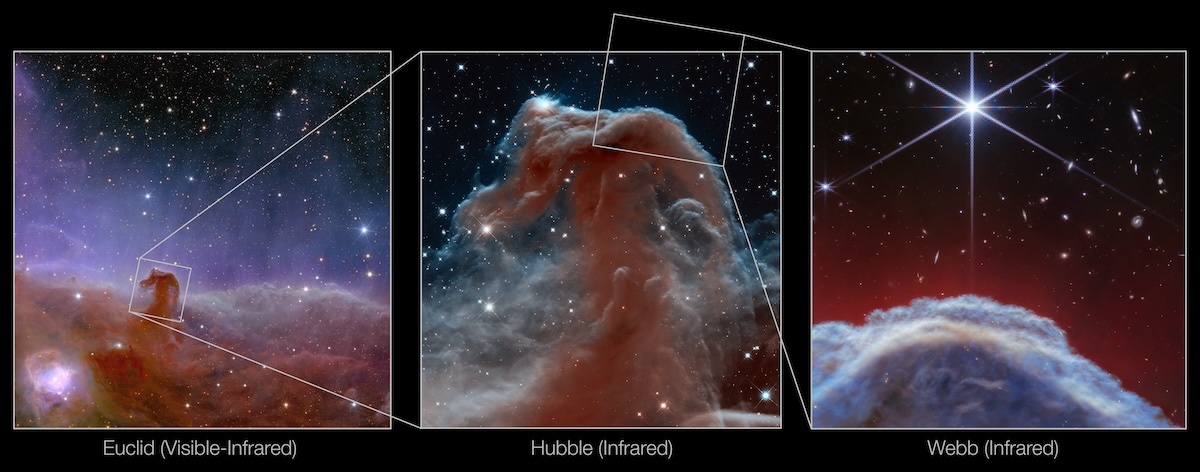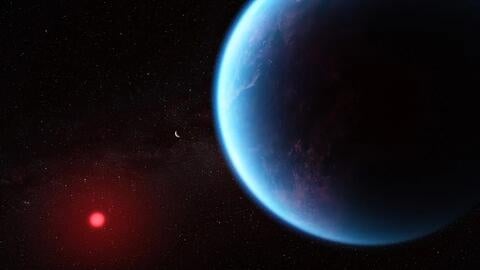Amid a site teeming with new and young stars lies an intricate substructure.
3.04.2024
James Webb Space Telescope joins the hunt for newborn exoplanets
"Basically, in every disk we have observed with high enough resolution and sensitivity, we have seen large structures like gaps, rings and, in the case of SAO 206462, spirals," team member and University of Michigan astronomer Gabriele Cugno said in a statement. "Most, if not all, of these structures can be explained by forming planets interacting with the disk material, but other explanations that do not involve the presence of giant planets exist.
"If we manage to finally see these planets, we can connect some of the structures with forming companions and relate formation processes to the properties of other systems at much later stages. We can finally connect the dots and understand how planets and planetary systems evolve as a whole."
Finding an unexpected planet
Cugno led a JWST investigation into the protoplanetary disk around the protostar SAO 206462. A protostar is a stellar body that has not yet piled on enough mass to trigger the fusion of hydrogen to helium in its core, the process that defines a fully fledged main sequence star like the sun.
In the protoplanetary disk around SAO 206462, the team spotted the signals of a forming planet, but with a twist: It wasn't the planet they were expecting to see.
"Several simulations suggest that the planet should be within the disk, massive, large, hot and bright. But we didn't find it. This means that either the planet is much colder than we think, or it may be obscured by some material that prevents us from seeing it," Cugno continued. "What we have found is a different planet candidate, but we cannot tell with 100% certainty whether it's a planet or a faint background star or galaxy contaminating our image.
"Future observations will help us understand exactly what we are looking at."
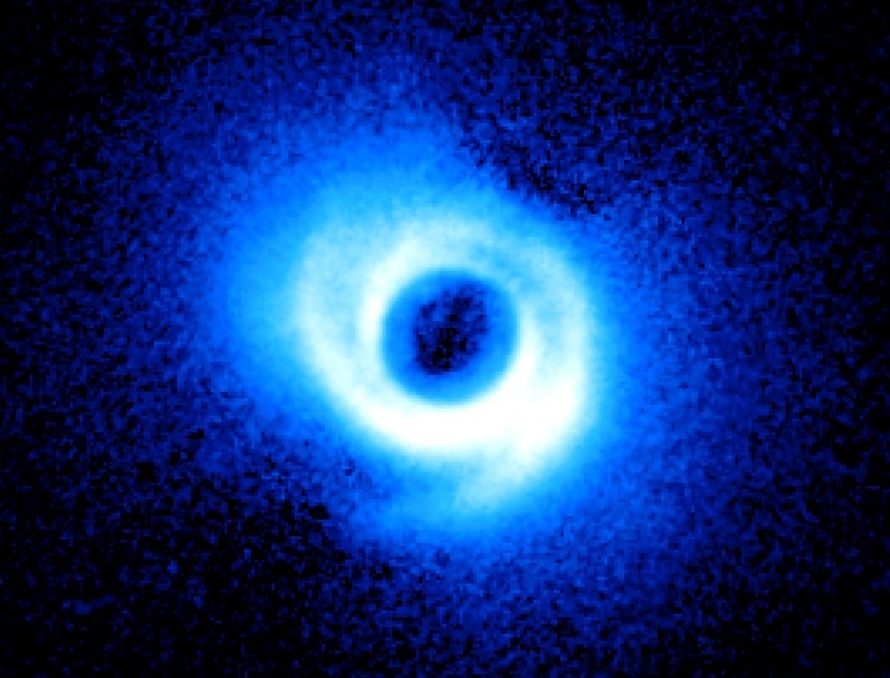
Spiral arms in the protoplanetary disk around infant star SAO 206462. (Image credit: NAOJ/Subaru)
This isn't the first time that the disk of SAO 206462 has been brought into focus. Hubble, Alma, and the Very Large Telescope (VLT) have all studied this protoplanetary disk, with these observations revealing that it's composed of two strong spirals.
These spirals are likely being created by a forming planet. Before looking for this planet with JWST, however, the team had expected to see a gas giant planetmade up mostly of helium, like Saturn or Jupiter.
"The problem is, whatever we're trying to detect is hundreds of thousands, if not millions of times fainter than the star," Cugno said. "That's like trying to detect a little light bulb next to a lighthouse."
JWST's Near Infrared Camera (NIRCam) allowed Cugno and colleagues to delve deeper into the disk of SAO 206462 and detect thermal energy from the planet, some of which is released as material falls onto it at high speeds.
"When material falls onto the planet, it shocks at the surface and gives off an emission line at specific wavelengths," Cugno said. "We use a set of narrow-band filters to try to detect this accretion. This has been done before from the ground at optical wavelengths, but this is the first time it's been done in the infrared with JWST."
This indicated a planet separated from the central protostar by around 300 times the distance between Earth and the sun. Gas giants usually form much closer to their stars than this, with some then migrating outward after the protoplanetary disk has dissipated.
The NIRCam results ruled out an object in the disk with a mass greater than 2.2 times the mass of Jupiter, with Cugno and colleagues concluding that, if there is a gas giant carving out the neat spirals of the protoplanetary disk of SAO 206462, it must be very cold.
Youngest star has the right stuff for planet formation
As Cugno and colleagues looked at the disk around SAO 206462, University of Victoria researcher Camryn Mullin used the JWST to study the star HL Tauri (HL Tau). This is an infant located around 450 light-years from Earth that has also been investigated by a wealth of telescopes.
With an estimated age of no more than 1 million years (compared to our middle-aged 4.6-billion-year-old sun), HL Tau is the youngest star in the JWST protoplanetary disk investigation.
"HL Tau is the youngest system in our survey and still surrounded by a dense inflow of dust and gas falling onto the disk," Mullin said. "We were amazed by the level of detail with which we could see this surrounding material with JWST, but unfortunately, it obscures any signals from potential planets."
The disk of HL Tau is well known to feature a number of gaps and solar system-sized rings that could host planets. Yet, because of how packed with dust the disk is and the system's youth, even the JWST is unlikely to see planets around HL Tau directly.
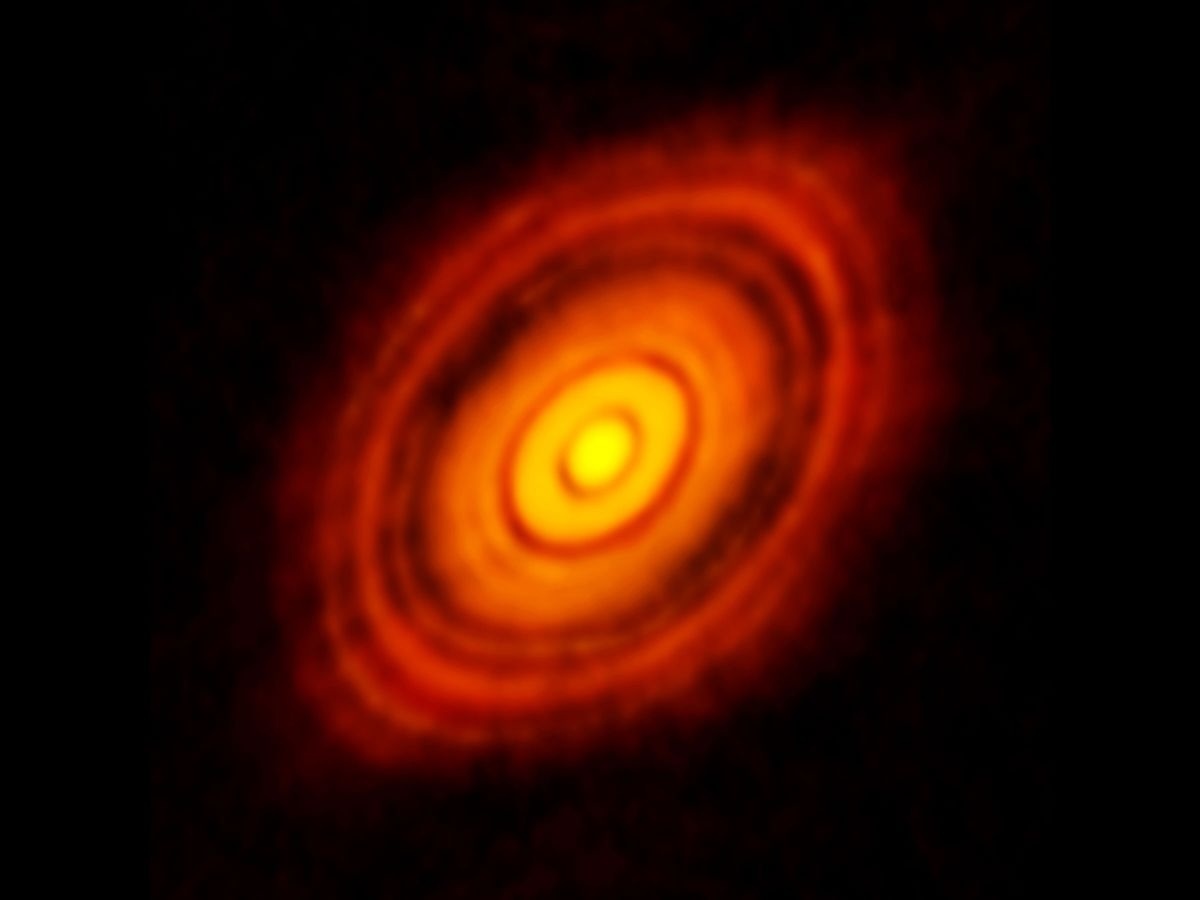
ALMA image of the dust disk around HL Tauri. (Image credit: ALMA (ESO/NAOJ/NRAO))
The team was able to distinguish a feature called a proto-stellar envelope with the JWST. This represents the dense inflow of dust and gas that is beginning to coalesce around HL Tau. This raw material is flowing to the star and its disk from the interstellar medium, gas and dust that exist between stars, and it will eventually serve as the raw material to birth planets.
The hunt for forming planets goes on!
Kevin Wagner, a NASA Hubble/Sagan Fellow at the University of Arizona's Steward Observatory, examined the protoplanetary disk of MWC 758 with the JWST. This is another protoplanetary disk with spiral arms that could indicate the presence of a massive planet.
This possible planet and any others failed to manifest in the team's study, but the sensitivity and power of the JWST did allow them to put constraints on any potential forming planets within this protoplanetary disk. This included ruling out the possibility that there are planets on the outskirts of the disk, far from the star MWC 758.
"The lack of planets detected in all three systems tells us that the planets causing the gaps and spiral arms either are too close to their host stars or too faint to be seen with JWST," said Wagner. "If the latter is true, it tells us that they're of relatively low mass, low temperature, enshrouded in dust, or some combination of the three — as is likely the case in MWC 758."

RTy9Ndj4dgWRHpR4ijzpCU-1200-80
Investigations like these into the formation of planets around young stars are vitally important in understanding how materials are distributed across young systems and how mature gatherings like the solar system came to be, researchers said.
"Only about 15% of stars like the sun have planets like Jupiter. It's really important to understand how they form and evolve and to refine our theories," team member and University of Michigan astronomer Michael Meyer said. "Some astronomers think that these gas giant planets regulate the delivery of water to rocky planets forming in the inner parts of the disks."
Thus, this investigation may ultimately be crucial to understanding how Earth formed and how it became able to support life.
The team's research is discussed in three papers published last week in the The Astronomical Journal.
Quelle: SC
----
Update: 5.04.2024
.
NASA’s Webb Probes an Extreme Starburst Galaxy
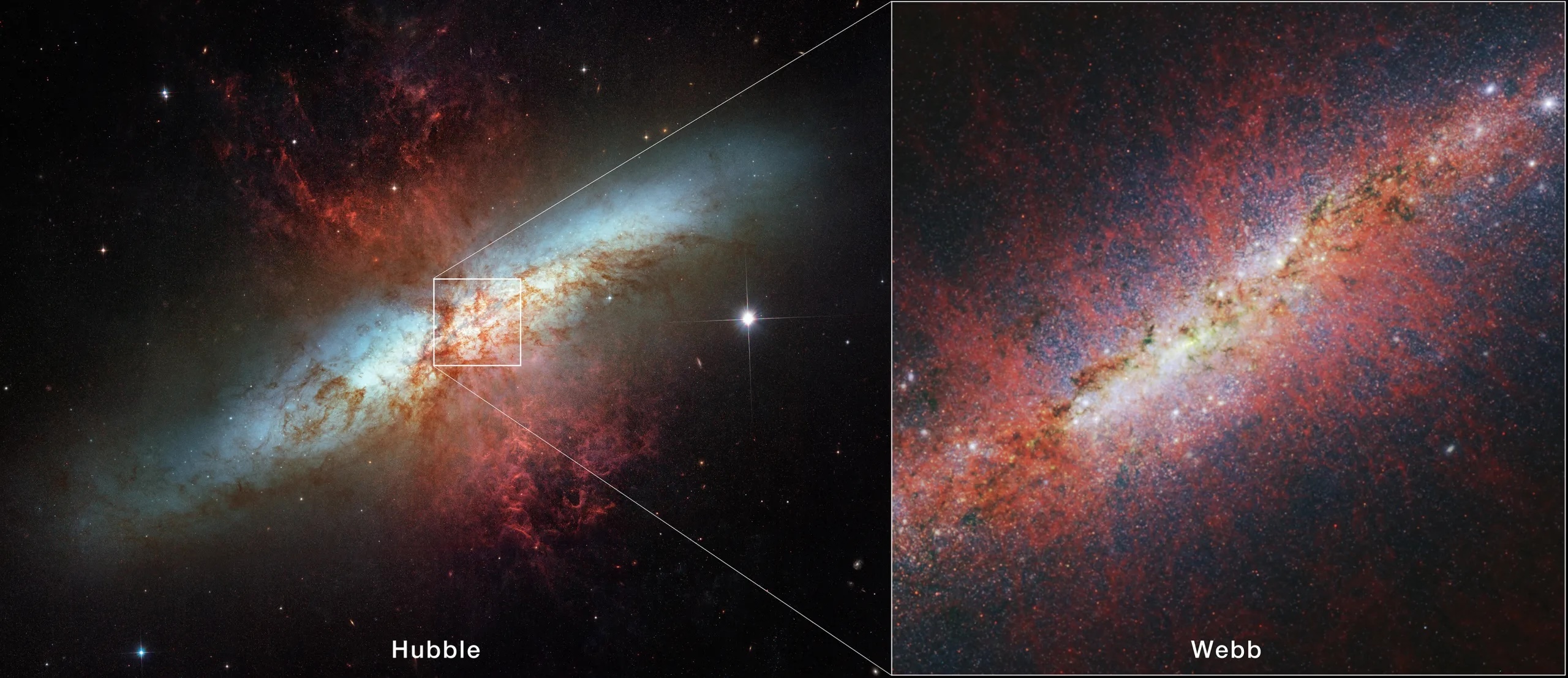
A team of astronomers has used NASA’s James Webb Space Telescope to survey the starburst galaxy Messier 82 (M82). Located 12 million light-years away in the constellation Ursa Major, this galaxy is relatively compact in size but hosts a frenzy of star formation activity. For comparison, M82 is sprouting new stars 10 times faster than the Milky Way galaxy.
Led by Alberto Bolatto at the University of Maryland, College Park, the team directed Webb’s NIRCam (Near-Infrared Camera) instrument toward the starburst galaxy’s center, attaining a closer look at the physical conditions that foster the formation of new stars.
“M82 has garnered a variety of observations over the years because it can be considered as the prototypical starburst galaxy,” said Bolatto, lead author of the study. “Both NASA’s Spitzer and Hubble space telescopes have observed this target. With Webb’s size and resolution, we can look at this star-forming galaxy and see all of this beautiful, new detail.”

